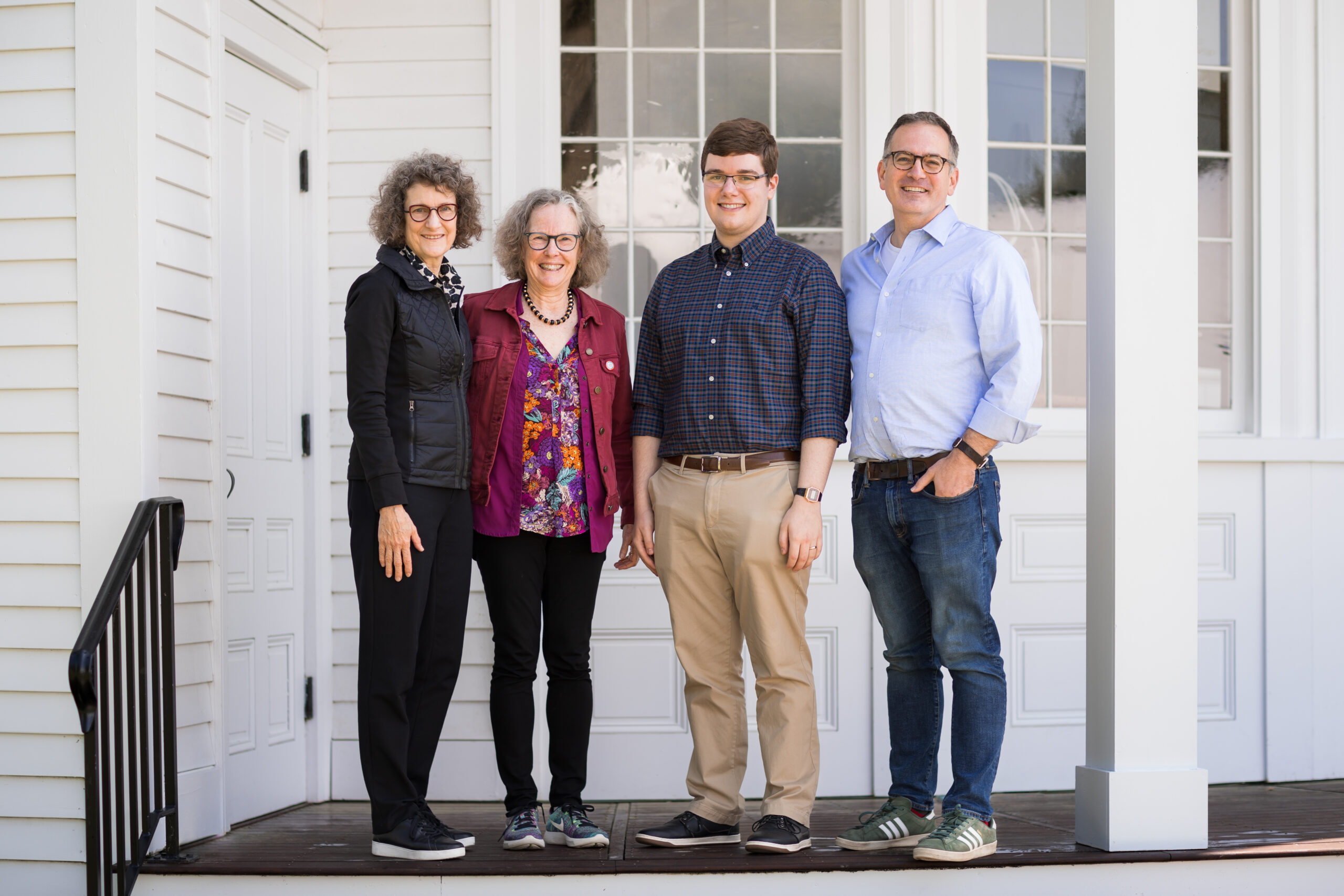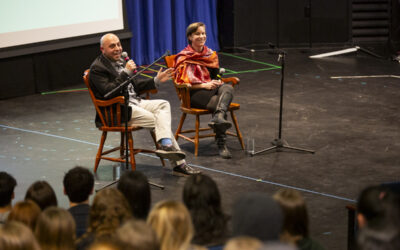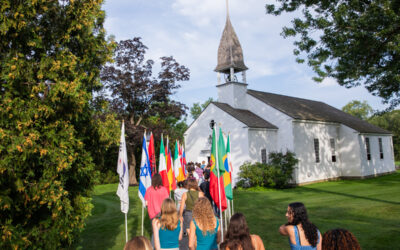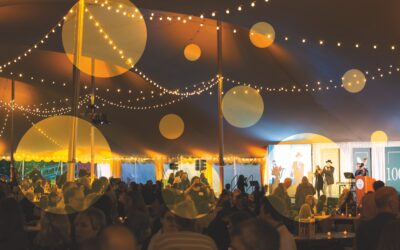
On June 10, four CA alums gathered in the Chapel to speak about how their work in science has impacted the lives of others. Lucy McFadden ’70, who retired from NASA in 2017 and became a volunteer Maryland naturalist in 2021, moderated the discussion that also included Peter de Blank ’92, co-director of the Brain Tumor Center at Cincinnati Children’s Hospital Medical Center; Connor McCann ’14, a doctoral candidate in mechanical engineering at Harvard University, where he studies robotics; and Gail Weinmann ’67, recently retired as the deputy director of the Division of Lung Diseases, National Heart, Lung, and Blood Institute, National Institutes of Health (NIH).
Their conversation, “Improving the Human Condition Through Science: Discovery for the Benefit of All,” was far-reaching, and their lives and work are a reflection of the CA mission. McFadden kicked off the conversation by asking McCann to share a story about his work in robotics. When did he realize he could make a difference?
“I loved making things with legos,” McCann said of his early self-identified nerd-hood. He said that at CA he joined the engineering club and was hooked on science when, as part of that club, his team helped a faculty child with cerebral palsy by inventing a walker that allowed him to move more freely and play with his brother. They called the device Luke Skywalker.
“That’s when it kind of hit me that these interesting technical challenges that can be fascinating to work on can have a very direct impact on someone,” McCann said. “And that’s led me to a lot of what I’ve worked on since. I’ve worked in the field of robotics primarily and, in particular, the field of assisted robotics—prosthetics, exoskeletons, wearable robots.”
In his current research, McCann is developing wearable “soft robots”— robots constructed from flexible materials such as rubber and fabric—designed to assist the wearer’s shoulder for medical and industrial applications.
Weinmann, during her time at National Institutes of Health (NIH), likewise has been involved in groundbreaking work. She explained that much of the work of NIH funds academic research in the United States and around the world. The focus on research, she said, is “because we don’t know where the good ideas are going to be.”
Clinical research funded by the NIH aims to have direct impact. She shared an example of how, early in her career, the NIH funded research and data collection to look at whether a surgical treatment for emphysema was effective. Part of the need was to consider efficacy; the other was, if effective, to ensure that the treatment would be covered by insurance and, in particular, the Center for Medicare and Medicaid.
“At the end of the day, the procedure did work,” she said. “It worked better in some people than others.” As a result of that trial, CMS approved the procedure for reimbursement.
Upon her retirement, Weinmann was immediately rehired to work on setting up programs defining and testing treatments for Post Acute Sequelae of SARS CoV2 infection (PASC), more commonly called “Long COVID.”
Peter de Blank is a pediatric neuro-oncologist. “One of the things I love about it is that I am both a clinician—I get to be goofy with kids—and I get to be a researcher.”
He said that part of how he approaches his work changed fundamentally when he saw a scan of a child’s brain tumor. He was never fond of doing research on mice, and the beauty and potential of MRIs allowed him to consider his calling quite differently.
“I’d never seen an MRI in color … it seemed like a miracle to me that you could see inside the body.” This led de Blank to think about connections in the brain and how those connections might be misformed or damaged when a brain tumor forms.
De Blank’s imaging research focuses on advanced magnetic resonance techniques: testing whether brain imaging can provide an important window to how the brain functions. The goal is to improve functional impairments in children with brain tumors by choosing the best tumor treatments and providing early intervention for kids at risk for deficits.



